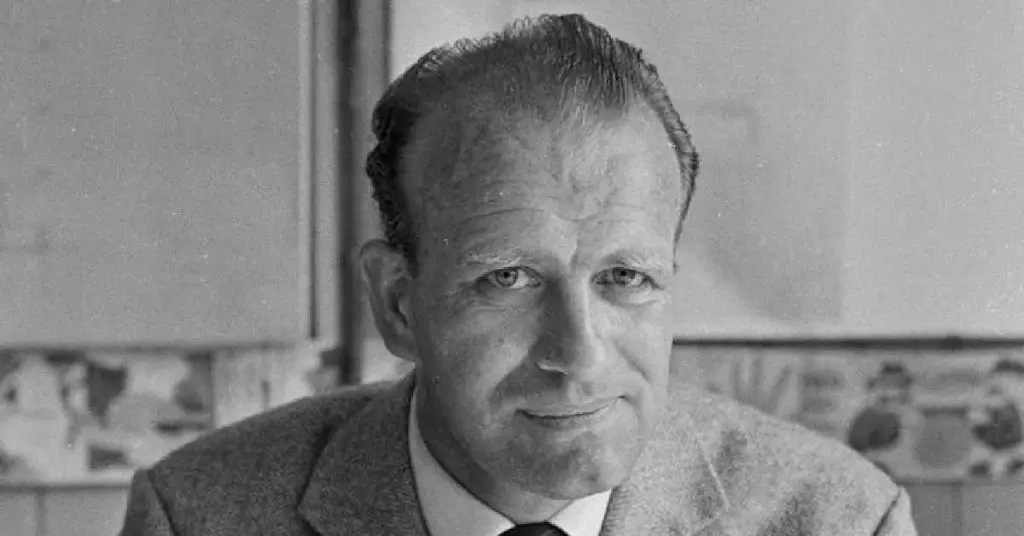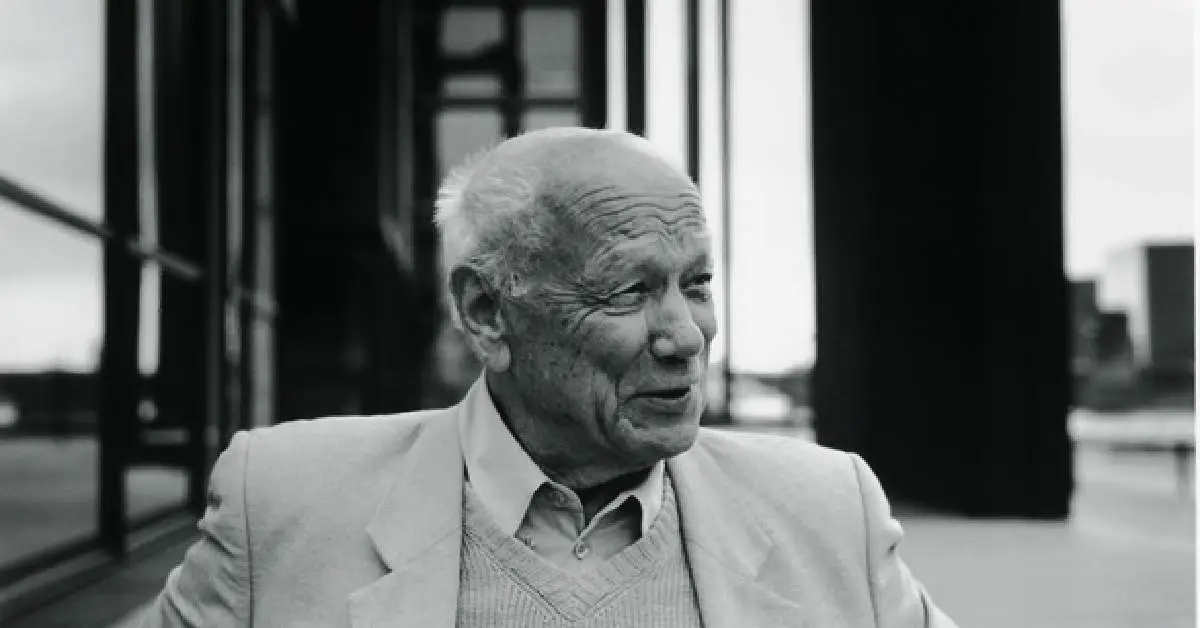Henning Larsen stands as a giant in the field of modern architecture, respected for his innovative designs and profound influence on the global architectural landscape. Born on August 20, 1925, in Opsund, Denmark, Larsen’s journey to becoming one of the world’s most celebrated architects began in the Danish countryside.
Early Life and Formative Years of Henning Larsen
Larsen’s fascination with structures and design was evident from a young age, inspiring him to contemplate the essential relationship between form and function. His academic pursuits took him to the prestigious Royal Danish Academy of Fine Arts School of Architecture in Copenhagen. Here, he honed his skills under the mentorship of distinguished architects and educators. They encouraged him to explore architectural theory and practice deeply. Additionally, his time at the academy was transformative, providing him with a solid foundation in architecture. It also fueled his desire to push the boundaries of contemporary design.
A pivotal moment came during Larsen’s time in the United States, where he studied at the Massachusetts Institute of Technology (MIT) for a brief period. His experience exposed him to cutting-edge architectural methodologies and the vibrant architectural community of mid-20th-century America. Thus broadening his perspective and inspiring him further.
Returning to Denmark, Larsen began his career in earnest, taking up positions in various architectural firms and design studios where he gained crucial experience. Besides, this period of apprenticeship was instrumental, providing him with opportunities to collaborate with other talented architects and test his growing ideas.
By the 1950s, Larsen was ready to establish his own architectural practice. Through his imaginative and thoughtful designs, he has inspired countless architects worldwide and solidified his place as a visionary in the field of architecture.
Career Highlights of Henning Larsen
Henning Larsen’s career is a testament to his visionary approach to architecture, marked by iconic projects that have left an imprint on cities around the world.
Milestones
One of the most significant milestones in Larsen’s career was the establishment of his architectural firm, Henning Larsen Architects, in Copenhagen in 1959. This venture allowed him to synthesize his educational experiences and innovative ideas into transformative architectural projects. With a steadfast commitment to designing buildings that resonate with both their environment and their users, Larsen quickly proved himself.
Perhaps the most renowned of Larsen’s works is the Copenhagen Opera House, completed in 2005. This striking structure, situated on the historic island of Holmen, embodies Larsen’s mastery of light and space. Moreover, it has sleek, modern façade and captivating interiors. The opera house, which features over 41,000 square meters of floor space, is not only an architectural marvel. It is also a cultural landmark, reflecting Larsen’s ability to marry aesthetic grandeur with functional performance spaces.

Extending his influence beyond Denmark, Larsen demonstrated his versatile design capabilities with the Harpa Concert Hall and Conference Centre in Reykjavik, Iceland, completed in 2011. This project was realized in partnership with Studio Olafur Eliasson and Batteríið Architects. Also, the building, adorned with a breathtaking facade of kaleidoscopic glass panels, captures the ethereal beauty of the Icelandic landscape. This is while serving as a vibrant cultural hub in Reykjavik.
Furthermore, Larsen’s work is characterized by a keen sensitivity to natural light, a feature abundant in the Malmö City Library in Sweden, completed in 1997. Dubbed the “Calendar of Light,” this extension of an older 19th-century building incorporates extensive glass walls and skylights. Hence, ensuring that the interior spaces are flooded with light throughout the day. Larsen’s design not only enhances the library’s functionality. It also creates an inviting ambiance for visitors, embodying his commitment to designing spaces that enhance the human experience.
Awards
In 1989, Larsen was honored with the C.F. Hansen Medal, Denmark’s most distinguished architectural award. Thereby, reflecting his influence on the national and international stages. Then in 2012, he received the European Union Prize for Contemporary Architecture – Mies van der Rohe Award for the Harpa Concert Hall.
Conclusion
Henning Larsen’s work continues to inspire architects around the world, with projects that embrace the principles of sustainability and social responsibility. His designs often incorporate concepts of daylight optimization and energy efficiency, demonstrating his foresight in addressing contemporary environmental concerns. What’s more, the International Criminal Court in The Hague, completed in 2015, stands as a testament. This is to his commitment to building sustainable structures that also serve significant societal functions.
Larsen’s enduring legacy is evident in the ongoing success of Henning Larsen Architects, a firm that remains at the forefront of innovative design solutions. It is continually expanding its global influence with projects in Europe, Asia, and the Middle East. Lastly, through his visionary designs, Larsen has not only shaped the physical world but also the very way we experience and interact with it.
FAQs about Henning Larsen
1. What are Henning Larsen’s most famous architectural works?
Some of Henning Larsen’s most famous works include the Copenhagen Opera House in Denmark and the Harpa Concert Hall and Conference Centre in Reykjavik, Iceland.
2. When did Henning Larsen establish his architectural firm?
Henning Larsen founded his architectural firm, Henning Larsen Architects, in 1959 in Copenhagen.
3. Where did Henning Larsen study architecture?
Henning Larsen studied at the Royal Danish Academy of Fine Arts School of Architecture in Copenhagen. Also, he briefly attended the Massachusetts Institute of Technology (MIT) in the United States.
4. What awards did Henning Larsen receive during his career?
Larsen received several prestigious awards, including the C.F. Hansen Medal in 1989 and the European Union Prize for Contemporary Architecture – Mies van der Rohe Award in 2012.
5. How has Henning Larsen impacted modern architecture?
Henning Larsen’s impact on modern architecture is evident in his innovative approaches to design, his promotion of sustainability, and the numerous iconic buildings he has created worldwide.
6. Is Henning Larsen’s architectural firm still active today?
Yes, Henning Larsen Architects continues to operate and remains a leading force in the field of architecture. Therefore, continuing to uphold the legacy of its founder through innovative projects worldwide.
7. What was Henning Larsen’s philosophy on architecture?
Henning Larsen believed in the power of architecture to elevate human experience, emphasizing functional beauty and sustainable design solutions.




